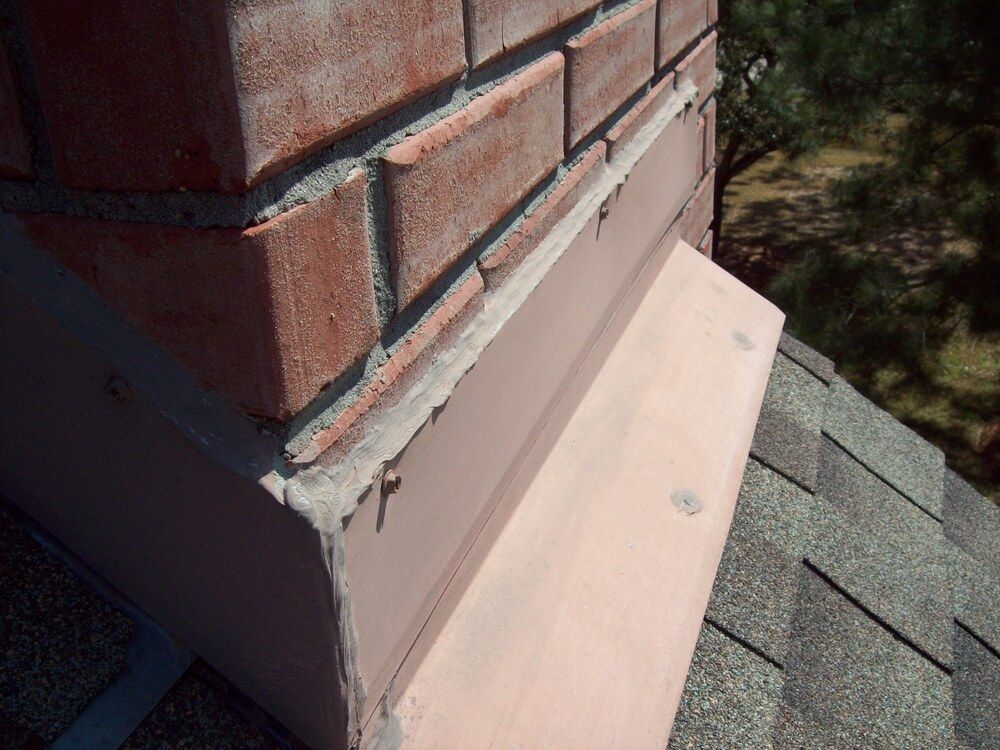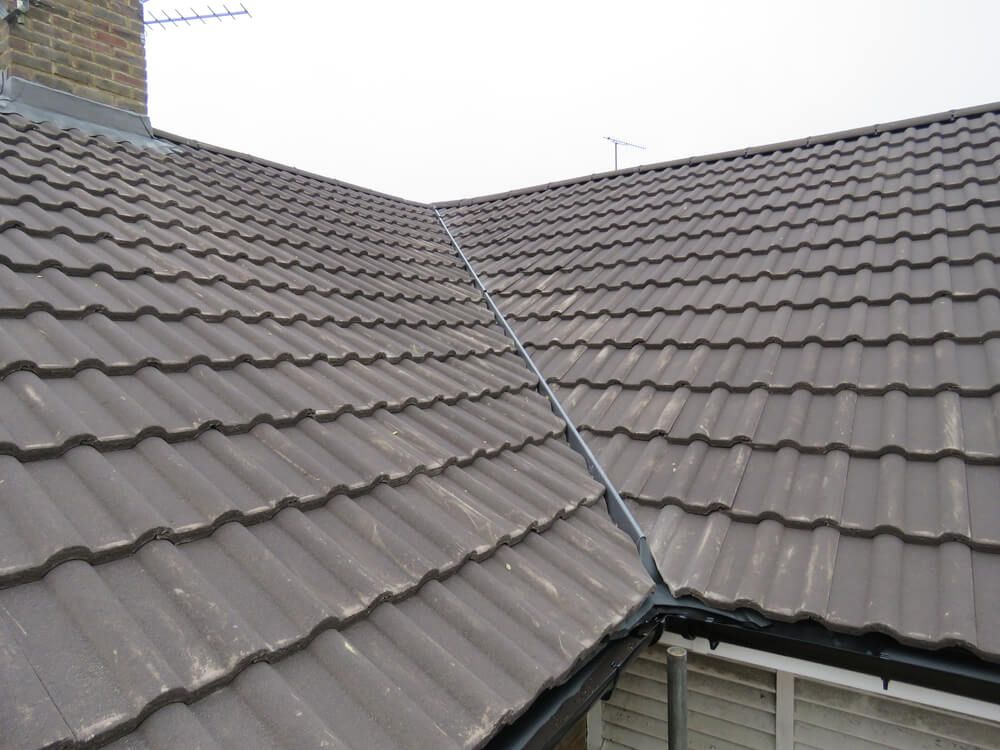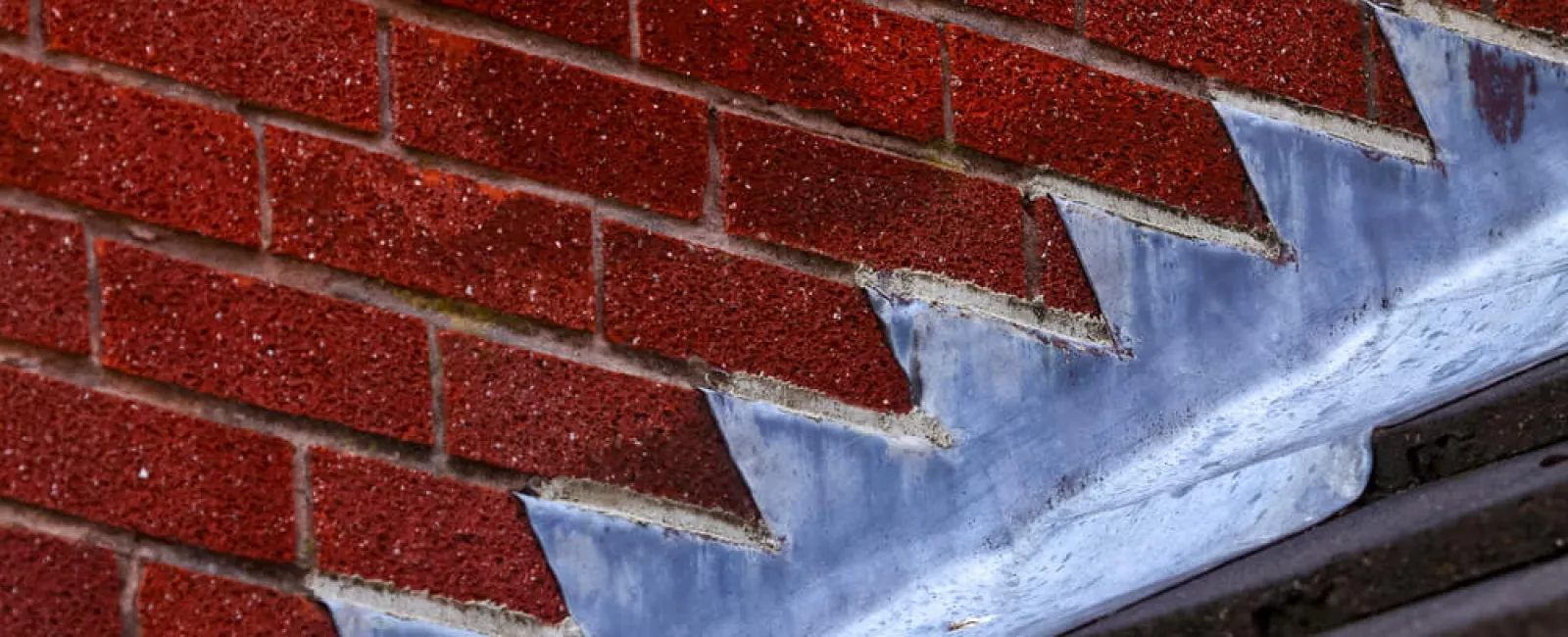Roofs are more than shingles—there's decking, underlayment, flashing, and more. Every layer of your roof works together to protect your home from water damage, and flashing is designed to do this in areas of your roof that are extra vulnerable to leaks. These areas include valleys and the space where protrusions like chimneys, vents, and dormers meet your roof.
Simply speaking, roof flashing is a roll of thin metal that resists moisture, wind, and other weather conditions. It can be made out of galvanized steel, aluminum, copper, and more.
Read on to understand why roof flashing is important, where it needs to be installed on a roof, and five common types of roof flashing.
Why Roof Flashing Is Important
Flashing is a flat, thin piece of metal used to help waterproof the perimeter and protrusions of your roofing system. It directs water away from seams and joints and prevents it from entering the openings and cracks in a roof. On shingled roofs, it's usually installed on top of the underlayment but beneath the shingles. On metal roofs, it's typically installed on top of the panels.
Flashing is a key element in keeping your home free of moisture and water damage. If water gets beneath roof shingles or other roofing materials, it can lead to rot, mold, and mildew and encourage pest infestations. Sealant can be used for small holes, but flashing provides waterproof coverage to a greater surface area of your roof.
Where Is Flashing Needed on a Roof?
All roofs need flashing, but it's especially important in certain areas that are more susceptible to leaks. Poorly installed flashing can lead to roof deterioration, water intrusion, and further damage.

Flashing is needed near:
Skylights: Some skylights are built with raised wood curbs to make room for flashing, while others come with flashing built in. It's important to know the difference and talk with your roofing contractor before installing a skylight.
Chimneys: Flashing needs to be installed around the base of any chimneys on your roof at several different parts. Sealing the area around your chimney is essential to keep the interior of your home dry.
Vents: Whether you have hood or pipe vents, flashing must be installed to stop any possibility of water trickling into your roof and, eventually, your home.
Valleys: On sloped roofs, flashing needs to be installed where two valleys meet. This point is where two sloping roof planes meet and create an angle, and these areas are highly vulnerable to water damage if flashing is not properly installed.
5 Common Types of Roof Flashing
Here are five of the most common roof flashing types.
Step Flashing
Step flashing lines a roof joint with multiple pieces of flashing that overlap like fish scales. It consists of rectangles of sheet metal bent into an L shape. The base of each L is nailed to the roof, and the top is secured to the vertical wall of the chimney or other protrusion.
Continuous or Apron Flashing
Continuous or apron flashing is a single piece of metal that runs the entire length of the joint being waterproofed. It's often used where protrusions meet a roof's surface. The advantage of continuous flashing is that there are no joints or overlaps that could leak. However, a single piece of metal cannot expand and contract with changing temperatures, so it can warp or break over time.

Valley Flashing
Valley flashing is a V-shaped channel for water that trunks into the area where two roof slopes meet. Because so much rainwater passes through this area, it needs extra protection in the form of valley flashing. This type of flashing can be hidden under shingles or left exposed in open valleys. It can be one piece of continuous flashing or several overlapping pieces like step flashing.
Drip Edge Flashing
Different shapes of flashing can be installed at the roof's edge to prevent precipitation from running down the fascia boards and into the soffits, called drip edge flashing. The simplest one is an L shape, similar to other flashing types. There is also T-shaped and F-shaped drip edge flashing, which can be more effective at directing water into gutters.
Base and Counter Flashing
Base and counter flashing are two types of flashing used together as a set to protect particularly vulnerable roof features like chimneys. The base flashing is usually a continuous L-shaped piece that attaches to the roof, but its upper edge is not attached to the roof penetration that it rests against. The counter flashing piece is attached to the penetration but not the roof, so the pieces of flashing overlap but are not secured to each other.
Flashing that you can see on a roof is usually counter flashing. The system of base and counter flashing allows for extra expansion and contraction without damage, which is vital for areas that are hard to waterproof, like chimneys.

Contact Master Roofers for Residential Roofing
Master Roofers has been serving the Central and Southern New Hampshire and North Shore, Massachusetts, area for over 80 years with exceptional residential and commercial roofing services. Our certified roofing team provides comprehensive services to keep your roof watertight and protecting your home, including inspections, emergency repairs, skylight services, and more.
Metal roof flashing isn't just functional. We can install decorative copper to elevate the look of your property.
Whether you need urgent roof leak repair or another residential roofing service, contact us today for a free estimate.

